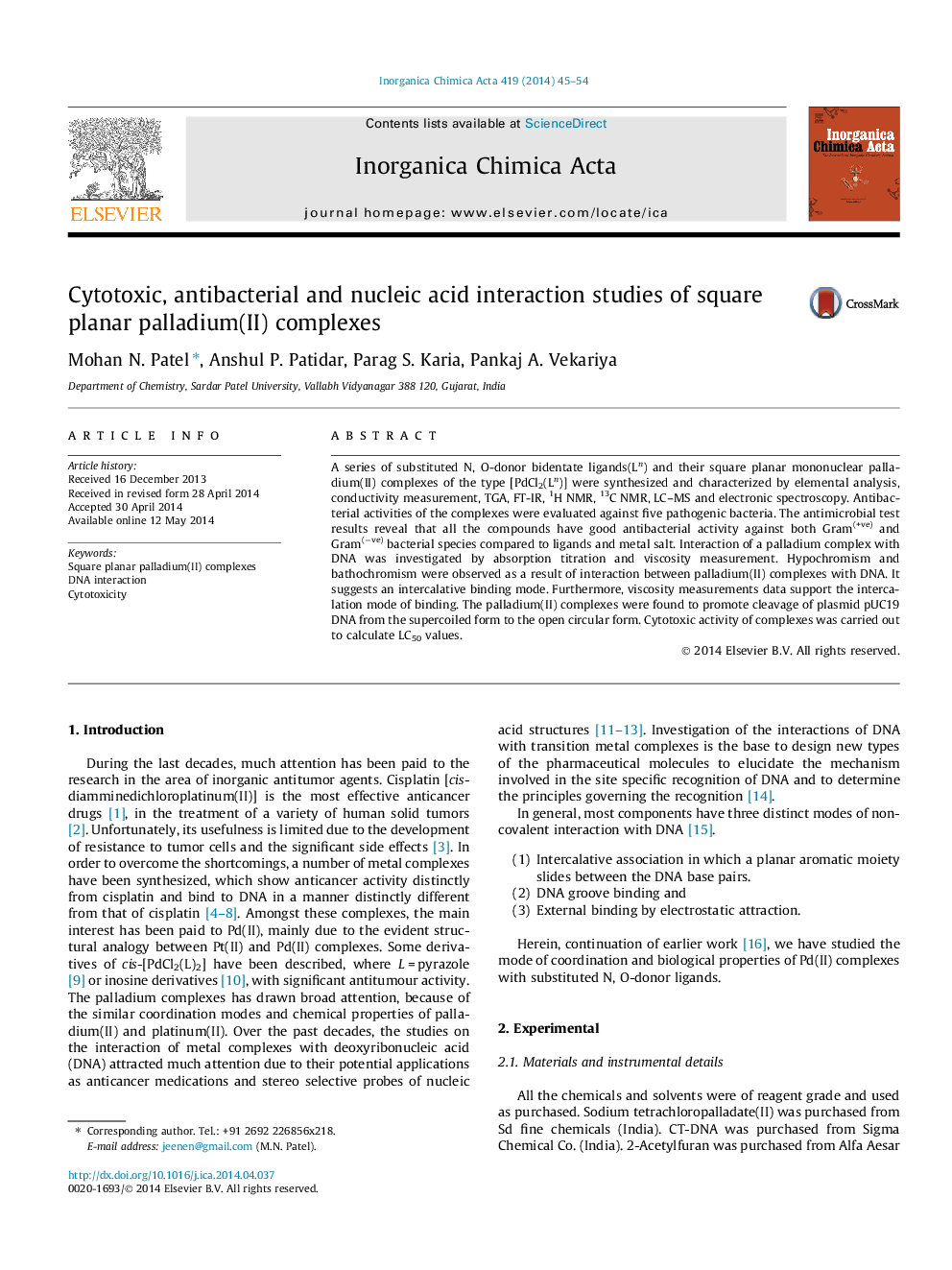| Article ID | Journal | Published Year | Pages | File Type |
|---|---|---|---|---|
| 1309602 | Inorganica Chimica Acta | 2014 | 10 Pages |
•Square planar palladium(II) complexes have been synthesized and characterized.•Antibacterial activity of the complexes has been screened against five different microorganisms.•DNA binding and cleavage study have been carried out using different techniques.•Cytotoxicity has been carried out to measure the LC50 value.
A series of substituted N, O-donor bidentate ligands(Ln) and their square planar mononuclear palladium(II) complexes of the type [PdCl2(Ln)] were synthesized and characterized by elemental analysis, conductivity measurement, TGA, FT-IR, 1H NMR, 13C NMR, LC–MS and electronic spectroscopy. Antibacterial activities of the complexes were evaluated against five pathogenic bacteria. The antimicrobial test results reveal that all the compounds have good antibacterial activity against both Gram(+ve) and Gram(−ve) bacterial species compared to ligands and metal salt. Interaction of a palladium complex with DNA was investigated by absorption titration and viscosity measurement. Hypochromism and bathochromism were observed as a result of interaction between palladium(II) complexes with DNA. It suggests an intercalative binding mode. Furthermore, viscosity measurements data support the intercalation mode of binding. The palladium(II) complexes were found to promote cleavage of plasmid pUC19 DNA from the supercoiled form to the open circular form. Cytotoxic activity of complexes was carried out to calculate LC50 values.
Graphical abstractSynthesized Pd(II) complexes show intercalative mode of binding with CT-DNA. It is involved a strong stacking interaction between an aromatic chromophore and the DNA base pair. Intercalative mode of binding is confirmed using absorption titration and viscosity measurement techniques.Figure optionsDownload full-size imageDownload as PowerPoint slide
